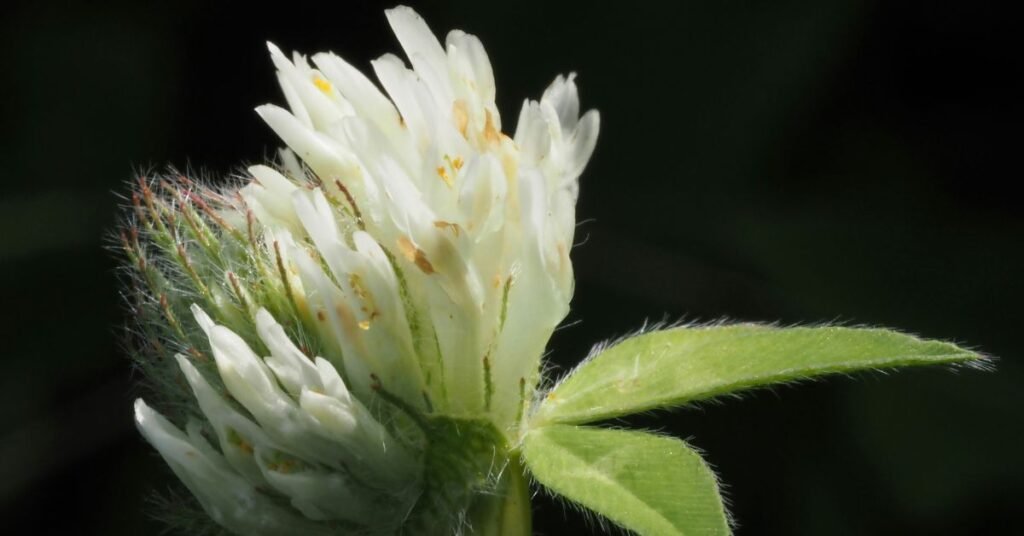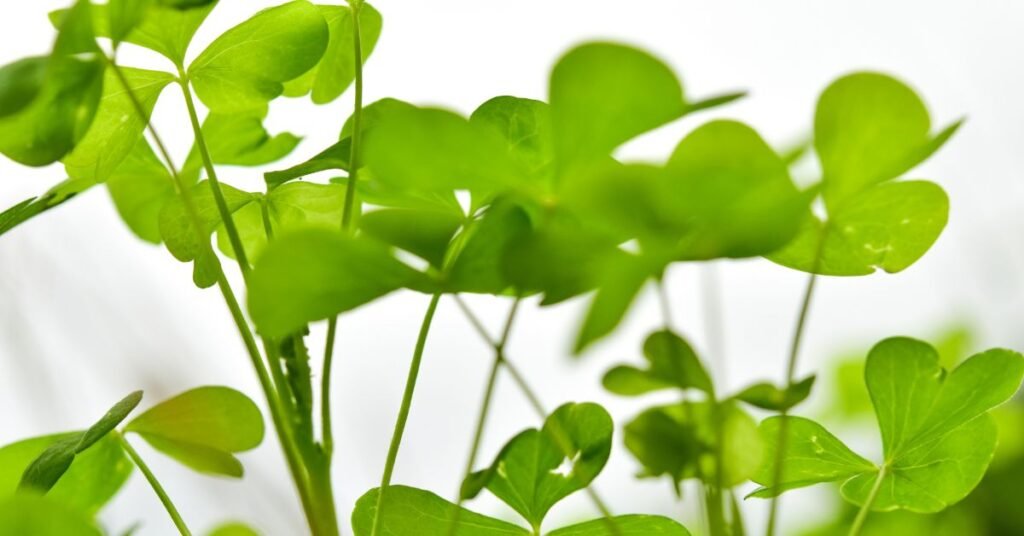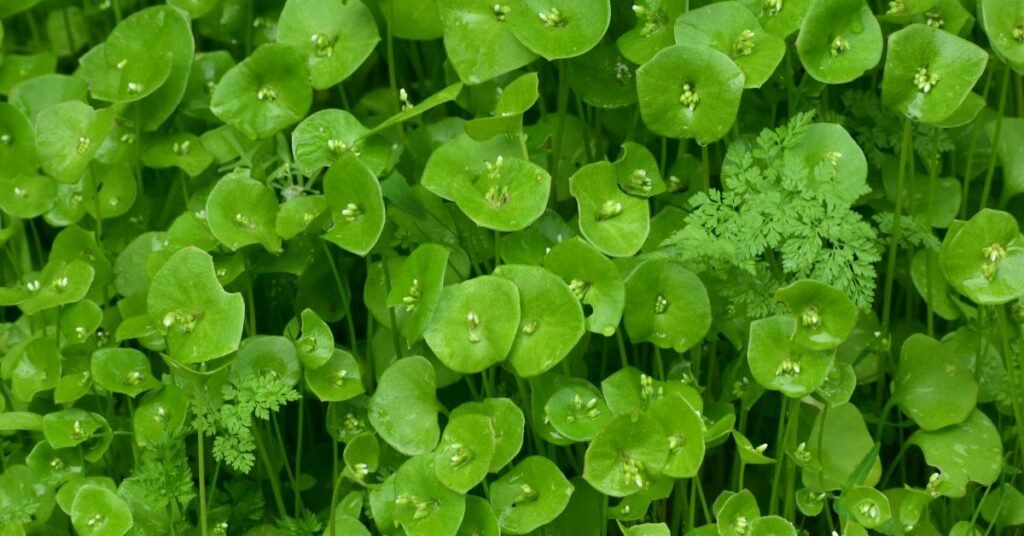The Shamrock Plant (Oxalis spp.) is a charming and symbolic indoor plant known for its delicate, clover-shaped leaves and small, cheerful flowers. Often associated with good luck, prosperity, and Irish heritage, the Shamrock Plant adds a touch of charm and positivity to any home or office space.
Though it looks delicate, the Shamrock Plant is surprisingly easy to grow and maintain, making it a perfect choice for both beginners and plant enthusiasts.
Introduction
The Shamrock has long been recognized as the national symbol of Ireland, representing faith, hope, and love. Botanically, the plant belongs to the Oxalis genus, which includes over 500 species of small flowering plants.
With its trifoliate (three-leaf) design, it’s often mistaken for the clover, but the Shamrock Plant is unique in its own right. Its leaves open in bright light and close at night — a phenomenon known as nyctinasty, adding a magical movement to your indoor garden.

Types of Shamrock Plants
There are several types of Shamrock Plants grown as houseplants, but the most popular varieties include:
- Oxalis triangularis (Purple Shamrock):
Deep purple triangular leaves with pink or white flowers. Strikingly ornamental. - Oxalis regnellii (Green Shamrock):
Classic green three-leaf variety with white or pink blossoms. - Oxalis deppei (Iron Cross or Lucky Clover):
Four-leafed variety with green and burgundy markings, believed to bring extra luck.
Each type shares the same easy-care routine and decorative appeal.
Ideal Growing Conditions
1. Light Requirements
Shamrock Plants love bright, indirect sunlight.
Place them near a window where they can receive 4–6 hours of filtered light daily. Avoid direct sunlight, as it can scorch the delicate leaves.
2. Temperature and Humidity
They thrive in cool indoor temperatures between 15°C and 25°C (59°F–77°F).
Avoid placing them near heat sources or cold drafts. Moderate humidity levels are best; if the air is too dry, lightly mist the plant.
3. Watering
The Shamrock Plant prefers evenly moist soil but dislikes soggy roots.
Water when the top inch of soil feels dry. Ensure proper drainage to prevent root rot. During the plant’s dormant period (usually summer), reduce watering until new growth begins.
4. Soil Type
Use well-draining potting soil, ideally a mix designed for houseplants.
A combination of peat moss, perlite, and garden soil works beautifully.

Fertilization and Feeding
Feed your Shamrock Plant every 2–3 weeks during its growing season (spring to early summer) using a balanced liquid fertilizer diluted to half strength.
Do not fertilize during dormancy, as the plant rests and conserves energy.
Propagation Methods
The Shamrock Plant can be propagated easily using bulbs (corms) or division.
Steps:
- Carefully remove the plant from its pot.
- Separate small corms (tiny bulb-like roots).
- Replant them in fresh, well-draining soil about an inch deep.
- Water lightly and keep in indirect sunlight until new shoots appear.
Within a few weeks, new leaves will sprout, giving you a fresh Shamrock Plant to share or enjoy.
Dormancy Period
Many new plant owners worry when their Shamrock Plant’s leaves suddenly wilt or die back — but this is normal!
After several months of growth, the plant enters a resting or dormant phase, typically in summer.
What to do:
- Stop watering.
- Place the pot in a cool, dark area.
- Allow it to rest for 6–8 weeks.
- Resume watering when new shoots appear.
This cycle ensures the plant remains healthy and long-lived.
Common Problems and Solutions
| Problem | Cause | Solution |
|---|---|---|
| Yellow Leaves | Overwatering | Let soil dry between watering |
| Drooping Leaves | Too little light | Move to a brighter spot |
| No Flowers | Lack of nutrients or dormancy | Fertilize regularly and allow rest period |
| Root Rot | Poor drainage | Repot in well-draining soil |
Symbolism and Cultural Meaning
The Shamrock Plant carries deep symbolic meaning across cultures:
- Irish Symbolism: Associated with Saint Patrick, who used the three-leaf design to explain the Holy Trinity.
- Good Luck Charm: A four-leaf Shamrock is believed to bring luck, love, hope, and faith.
- Positive Energy: The plant is thought to attract prosperity, happiness, and new beginnings.
Because of these meanings, the Shamrock Plant is often gifted on St. Patrick’s Day, housewarmings, and new ventures.

Benefits of Growing a Shamrock Plant
1. Air Purification
Like many houseplants, the Shamrock Plant helps filter indoor air and maintain freshness.
2. Aesthetic Appeal
Its delicate leaves and graceful flowers add elegance and tranquility to home or office décor.
3. Symbol of Positivity
Brings luck and good fortune — perfect for desks, entryways, or meditation areas.
4. Easy Care and Longevity
Once established, it’s a low-maintenance plant that can thrive for years with minimal effort.
Toxicity Information
The Shamrock Plant contains oxalic acid, which can be toxic if ingested in large amounts by pets or humans.
Keep it out of reach of children and pets, and always wash your hands after handling the plant.
Conclusion
The Shamrock Plant is more than just a decorative addition — it’s a symbol of luck, renewal, and life’s simple joys. Its vibrant leaves, easy-care nature, and deep-rooted cultural meaning make it a perfect choice for anyone wanting a beautiful and symbolic indoor plant.
Whether you grow it for its charm or for the positive energy it brings, the Shamrock Plant will always add a little bit of magic to your space.

